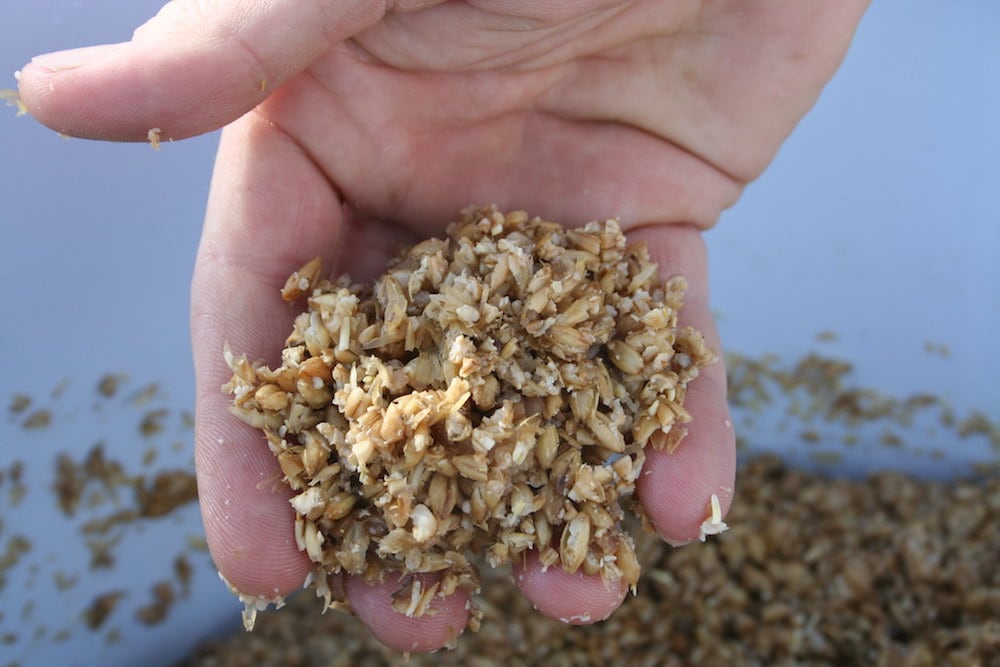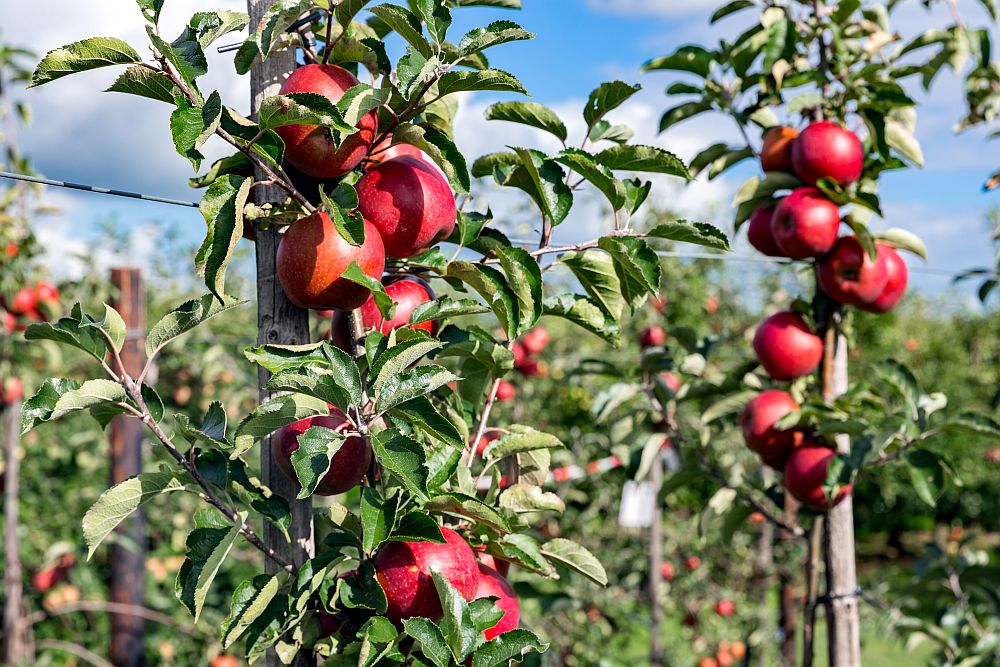
[Image above] Spent grains make up to 85% of the byproduct from the beer making process. These grains could be used as animal feed—but why not turn them into something more high-value? Credit: Jinx!, Flickr (CC BY-SA 2.0)
Every time I turn on the news, it feels like megacompanies are forever growing larger and larger (what doesn’t Disney own nowadays?). Yet as corporate goliaths take over the U.S. economy, there is one sector in which small companies are thriving surprisingly well—breweries.
As overall beer sales continue to decline, craft beers are the notable exception—the number of craft breweries increased substantially in the past decade, and now craft beers account for more than 24% of the $114-billion U.S. beer market.
When starting a craft brewery, creating a unique beer flavor is one important consideration for new brewers. But another important consideration is what to do with beer waste.
Beer waste refers to byproducts from the beer making process. In particular, spent grains—the solid residue left over after most sugars, proteins, and nutrients are extracted—account for up to 85% of beer waste.
There are many ways to reuse or recycle spent grains , including using them for animal feed or turning them into baked goods. However, a recent study led by researchers at Queen’s University Belfast in Northern Ireland offers a new, potentially more profitable recycling option—turn spent grains into high-value carbon materials.
The Belfast researchers, along with colleagues from Sultan Qaboos University in Oman and the InnoTech Centre at South West College in the U.K., explain that a lot of current research focuses on turning organic waste into biomass, i.e., using it as fuel to produce energy. But “synthesis of high value-added end products from [brewer’s spent grain] … retains materials such as intrinsic carbon inherent in biomass in use much longer than their original intended purpose,” they write in the paper.
To create high-value carbon materials from spent grain, the researchers first dried the spent grain to remove all moisture. Then, they used two consecutive activation methods to produce activated carbon, the first high-value material.
For the first activation, the researchers mixed spent grain with phosphoric acid (H3PO4) and deionized water and then heat-treated the mixture. For the second activation, they added potassium hydroxide (KOH) and heat-treated the mixture again before washing the sample with hydrochloric acid and hot water to remove KOH and neutralize the pH, respectively.
Activated carbon produced in the second activation step was then used as a carbon source to prepare carbon nanotubes (CNTs), the second high-value material.
Following numerous analyses using XRD, SEM, TEM, and more to characterize activated carbon and CNTs, the researchers tested removing heavy metals from wastewater with these materials.
“The BAC‐K sample [activated carbon from the second activation] removed 96% of Pb2+ after 72 h of the test, whereas BAC‐P [activated carbon from the first activation] and CNTs removed 90 and 77%, respectively,” they write. “Although the CNTs showed the lowest removal rate based on a longer timeframe, it still removes 89% of Pb2+ over seven days, thus showing a high adsorption capacity.”
In the conclusion, the researchers discuss what their research means for the “circular economy,” i.e., an economic system aimed at eliminating waste and promoting continual use of resources.
“The novel route outlined to high surface area ACs [activated carbons] and hydrophilic MWCNTs [multiwalled carbon nanotubes] from this particular waste stream helps address and apply the circular economy concept by upcycling an otherwise waste feedstock, adding value and other potential routes for application such as wastewater treatment and other end uses for AC and CNTs,” they state.
Interested in ways that ceramic materials can contribute to the circular economy? “Ceramics for the Circular Economy,” a special issue of the International Journal of Applied Ceramic Technology, discusses life cycles, using waste and recycled materials, and more.
The paper, published in Journal of Chemical Technology and Biotechnology, is “Upcycling brewer’s spent grain waste into activated carbon and carbon nanotubes for energy and other applications via two‐stage activation” (DOI: 10.1002/jctb.6220).
Author
Lisa McDonald
CTT Categories
- Environment
- Material Innovations


